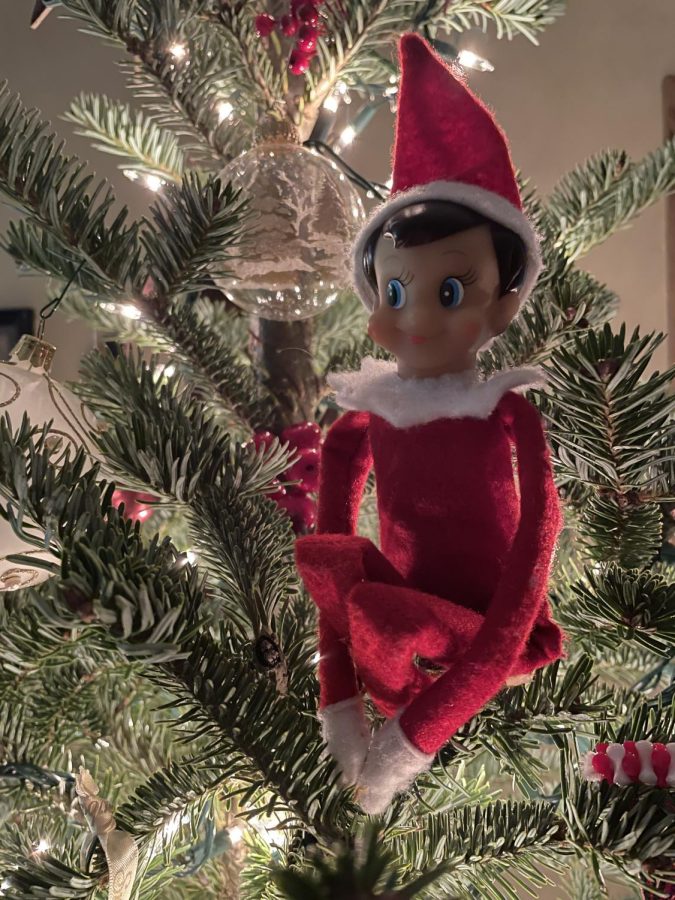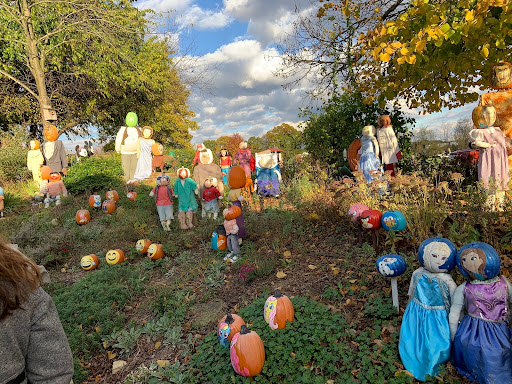Charming traditions surrounding The Elf on the Shelf
The Elf on the Shelf can take on many interesting names! Some students around our school have elves named Carmen, Elfie and Mistletoe.
The time of year for writing Christmas lists and letters to Santa is here once again, and the main concern for many children is that their name is on Santa’s Nice List. For many, the upcoming festivities also come with a visit from a certain pointy-hat elf. This character is none other than The Elf on the Shelf that has become a household name in recent years. Opinions on this elf vary, but the overall consensus is that it is a wonderful addition to the holiday celebrations.
While families may have different traditions surrounding this magical being, the general premise is the same. The Elf on the Shelf includes a storybook and an adorable elf figure that dons a red outfit and pointy hat. The book explains that the elf is actually a “scout elf” that watches over children during the day. During the night, the elf flies back to the North Pole to report on the children’s behavior to Santa before coming back home to hide in a different spot than before. It is then up to the children to seek out the elf in its new hiding place every morning.
The Elf on the Shelf that we know today dates back to 1970s Georgia where the original Elf on the Shelf, Fisbee, visited the Aebersold family. This tradition was so popular with the family’s twin girls that their mother, Carol, wrote a poem to accompany the elf in 2004. The next year, Carol developed her idea and began the company in charge of The Elf on the Shelf.
The Elf on the Shelf’s popularity skyrocketed in 2007 when actress Jennifer Garner was photographed carrying the iconic box in New York. This prompted a “Today” show segment followed by a large increase in sales. Since then, celebrities such as Kim and Kourtney Kardashian, Kevin Jonas and Kelly Clarkson have taken to social media to share the creative things that their elves do.
Each elf has his or her own personality which translates to some very unique hiding spots and antics. Physics teacher Mrs. Welsh’s daughters are visited by an elf named Gavin who becomes very mischievous around the holidays. In the past, Gavin has drawn mustaches on the family pictures around the home, and even occasionally hides candy canes for the girls to find.
In some households, such as with the Welsh family, the elf arrives the day after Thanksgiving. Other elves come back for the season on December 1 to begin the holiday month. Elves also leave at different times after their work is done. Gavin from the Welsh family sticks around to watch the girls open presents on Christmas day, while other elves leave with Santa when he brings the presents on Christmas Eve.
One major aspect of The Elf on the Shelf is that touching it is off limits. Legend has it that if the elf is touched by anyone who doesn’t live at the North Pole, it will not be able to fly and report to Santa. If the elf is touched by accident, then there are multiple approaches to fix the flying fiasco. Some elves require a sprinkling of cinnamon or sugar on their hat, while others call for a written letter to Santa to apologize. This ensures that the elf will have the ability to do his or her duties as a scout elf.
Although The Elf on the Shelf has become a popular part of many holiday traditions, some parents don’t love the idea of the elf. Math teacher Mr. Phillips’ children do not have an elf because Phillips claims that “nobody likes a snitch,” referring to the elf informing Santa all about the children’s behavior.
Despite some controversy, many families see the elf as a positive experience around the holidays. In the Welsh household, the girls enjoy looking for the elf every morning.
“The girls don’t see him as a threat. They like to find him every day and they see him as a good thing,” says Welsh. Traditions of The Elf on the Shelf vary in fun and interesting ways, but the main idea of the elf is simple. This character encourages friendly and constructive behavior in children, while also helping people of all ages get into the holiday spirit. Just remember not to touch the elf!
Outside of school, Hannah can usually be found catching movies with friends, hiking local trails, wandering around art museums, or grabbing tickets to...






